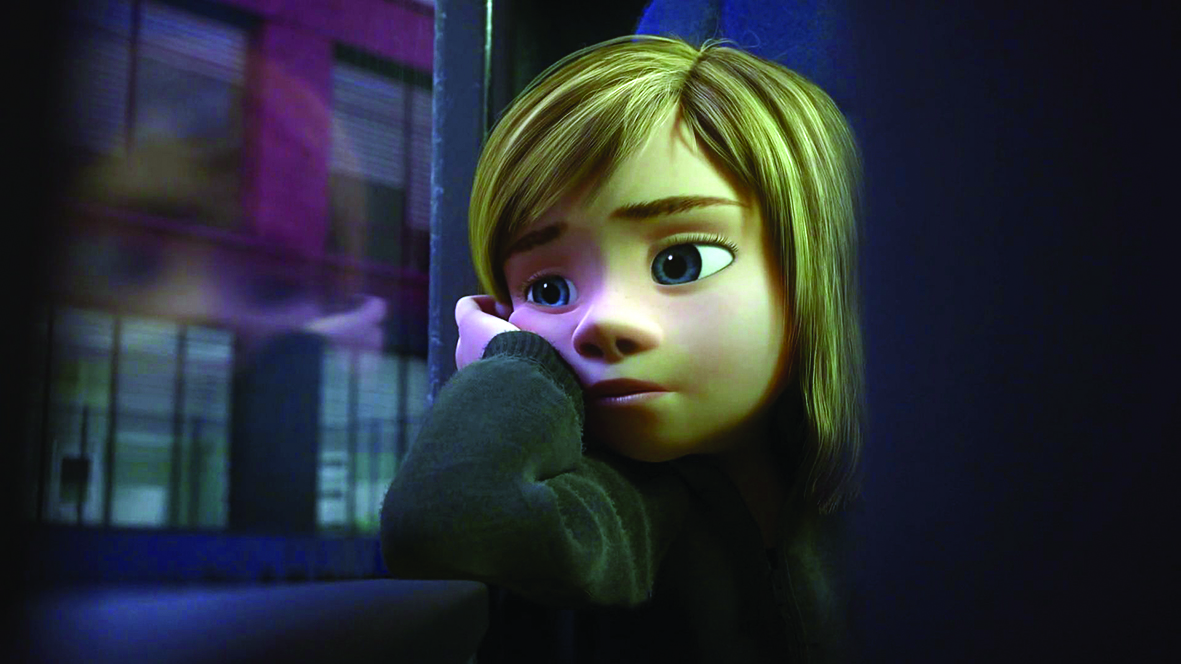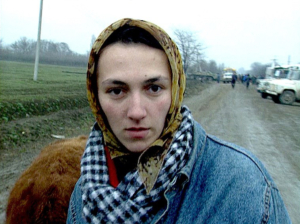Do you ever look at someone and wonder, ‘What is going on inside their head?’
So begins Inside Out (Pete Docter, 2015), before setting out to answer that very question. The Pixar production earned an Academy Award for Best Animated Feature for its fantastical portrayal of life inside the mind of an eleven-year-old girl, Riley (Kaitlyn Dias). In this universe, Riley’s brain is controlled by a quintet of emotions – Sadness (Phyllis Smith), Anger (Lewis Black), Fear (Bill Hader), Disgust (Mindy Kaling) and Joy (Amy Poehler) – with the film’s own joy coming from its creative conceptualisation of how our minds might operate with such disparate pilots at the helm.
Inside Out is among Pixar’s better films. Granted, it doesn’t stray far from the formula established in their first feature, 1995’s Toy Story (John Lasseter) – the narrative remains anchored to a buddy storyline, the creativity is counteracted by moments of tear-jerking pathos and the central conceit is essentially ‘What if toys were alive?’ except for emotions – but the execution and animation are topnotch.
Beyond its appeal as entertainment, Inside Out boasts a surprisingly robust representation of neurology and psychology. This is a film perfectly suited for that last week of term in middle school: assessment is finished, and it’s time for some incidental learning. Neurological and psychological science tends to be downplayed in the Australian Curriculum until the later years, but Inside Out can open a window to concepts that are not only scientifically compelling, but also incredibly helpful to aid young students in understanding their own minds – both emotionally and academically.
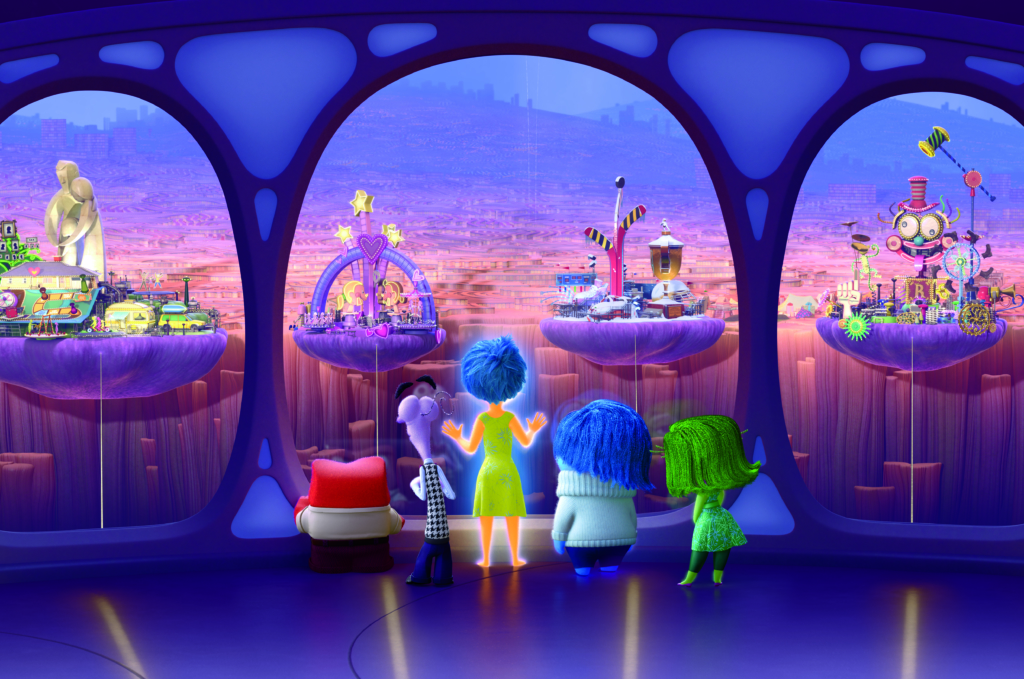
To make a memory
After establishing its ingenious premise with a trip down memory lane, Inside Out swiftly establishes the dilemma driving its narrative. Riley has just moved interstate – from Minnesota to San Francisco, California – and the process of adjusting to a new home and a new school has thrown her into emotional turmoil. Inside her mind, that turmoil is realised as a conflict between Joy and Sadness that eventuates in an adventure through the inner workings of Riley’s brain.
At stake are two keystones of Riley’s consciousness: her ‘islands of personality’ and her core memories. The former are manifestations of her defining personality traits, adorably realised as messy masses floating above a chasm of forgotten memories. As the film begins, there are five islands: Hockey Island, Goofball Island, Friendship Island, Honesty Island and Family Island.
From a scientific point of view … there’s not much science to be found among these islands of personality. We can’t exactly map one’s personality traits to sections of their cerebrum. That said, I do think there’s inspiration for a creative getting-to-know-you activity here, in which students could try and decide what their five islands might be, as well as – given that the islands are replaced over Inside Out’s runtime – what they might have been.
More scientifically compelling is the way the film imagines the process of making and storing memories. The gist is that, each day, Riley’s memories – colour-coded according to the primary emotion they’re associated with – are sent off wholesale to a storage facility. Some of those memories gradually fade and, eventually, are discarded. Meanwhile, a small number of especially significant events are codified as core memories, forming a foundation to Riley’s character much like her islands of personality. The narrative thrust of Inside Out largely revolves around Joy’s motivation to preserve Riley’s core memories – and their associated joyful emotions.
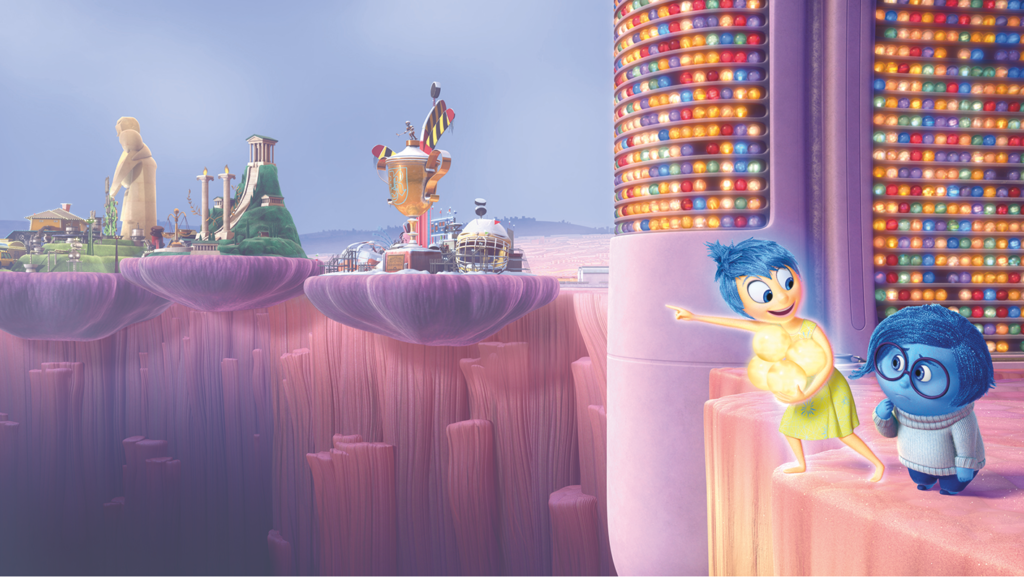
While the candy-coloured aesthetic that accompanies this memory museum is entirely Pixar’s design, the underlying mechanisms are drawn from neurological fact. As science journalist JV Chamary writes in Forbes, the way the five emotions encode new events as memories in the film mirrors the way ‘nerve cells (neurons) in the amygdala [send] signals to the hippocampus’.[1]JV Chamary, ‘How Inside Out Explains the Science of Memory’, Forbes, 30 August 2015, <https://www.forbes.com/sites/jvchamary/2015/08/30/inside-out-science/?sh=65fad2705184>, accessed 23 August 2021.
A post-film discussion about memory and Inside Out presents an opportunity, then, to explore the biological composition of the brain: how, for instance, the amygdala operates as a core component of our neural system, managing our emotional reactions; and how the hippocampus stores knowledge and memories.
Memory can be split into implicit and explicit systems: the former includes unconscious processes and reflexes, while the latter is where we consciously access facts and events.
There’s also an opportunity here to explore different kinds of memories. The film distinguishes memories in a few ways – what emotion(s) they’re associated with, how old (and faded) they are, how important they’re considered to be – but that’s only scratching the surface of memory. Memory can also be split into implicit and explicit systems: the former includes unconscious processes and reflexes, while the latter is where we consciously access facts and events. The two can overlap, particularly when strong emotions are in play, but we can sometimes remember things without meaning to (think: the recurring ad jingle gag in Inside Out).
Beyond biology, this discussion can enable students to reflect on the way experiences become memories, and the spectrum that ranges from short-term memories forgotten within days to long-term, ‘core’ memories. As expressed in Inside Out – and supported by science[2]See ‘When Storing Memories, Brain Prioritizes Those Experiences That Are Most Rewarding’, ScienceDaily, 20 November 2018, <https://www.sciencedaily.com/releases/2018/11/181120125916.htm>, accessed 23 August 2021. – your brain will recall facts and events that it considers meaningful while forgetting the others. Students who develop a better understanding of how their brain operates can actually become better at learning; knowing how revision might help give a new skill meaning, and therefore transfer it to one’s long-term memory, can help motivate the completion of homework that might otherwise seem meaningless (I’m aware that it’s a tad depressing to pivot from a fun Pixar movie to ‘Do your homework!’ but hey, if it works …).

Perchance to dream
Dreams feature prominently in the midsection of Inside Out. Desperate to wake Riley up and stop the upheavals currently taking place in her mind, Joy, Sadness and Riley’s early-childhood imaginary friend Bing Bong (Richard Kind) infiltrate her dreams, which are imagined as a Hollywood film set – ‘Dream Productions’[3]I would’ve gone with ‘Dream Factory’, but I’m not an Oscar-nominated screenwriter so I digress. – complete with actors, directors and special effects.
Before our trio of protagonists disrupt the proceedings, the screenplay for Riley’s dream is constructed from recent events. Part of what sets Inside Out in motion is the drama associated with Riley developing a new ‘core memory’ – a sad recollection of her disastrous attempt to introduce herself to her new classmates. That event is restaged wholesale by Dream Productions (though re-envisaged with a dash of familiar dream-world humiliation, as Riley sheds teeth and pants in quick succession).
Dreams are a tricky topic to explore in science, at least in part because their interpretation has so often been associated with pseudoscientific explanations. As a random example, my first Google result for the question ‘What does teeth falling out mean in dreams?’ returns a dentist website on which a social media coordinator by the name of Anna informs the reader of possible interpretations like having ‘a secret wish to be nurtured’, ‘feeling insecure’ or that it’s ‘a Freudian thing’.[4]Anna Keefe, ‘Teeth Falling Out in Your Dreams: What Does It Mean?’, Delta Dental website, 13 July 2018, <https://www.deltadentalwa.com/blog/entry/2015/10/teeth-falling-out-in-your-sleep-the-common-dream-decoded>, accessed 23 August 2021.
Psychologists are interested in interpreting dreams, but their analyses tend to be less straightforward: a 2018 peer-reviewed article on the topic concluded that ‘the present findings support the dental irritation hypothesis and do not support the symbolic hypothesis regarding the origins of [teeth dreams]’.[5]Naama Rozen & Nirit Soffer-Dudek, ‘Dreams of Teeth Falling Out: An Empirical Investigation of Physiological and Psychological Correlates’, Frontiers in Psychology,vol. 9, article 1812, 26 September 2018, available at <https://www.frontiersin.org/articles/10.3389/fpsyg.2018.01812/full>, accessed 23 August 2021. In short, you dream about your teeth falling out because your teeth are sore, not because of a secret wish to be nurtured. Equally, there isn’t much scientific support for those claiming to see their future in their dreams … as much as that’d be a neat trick.
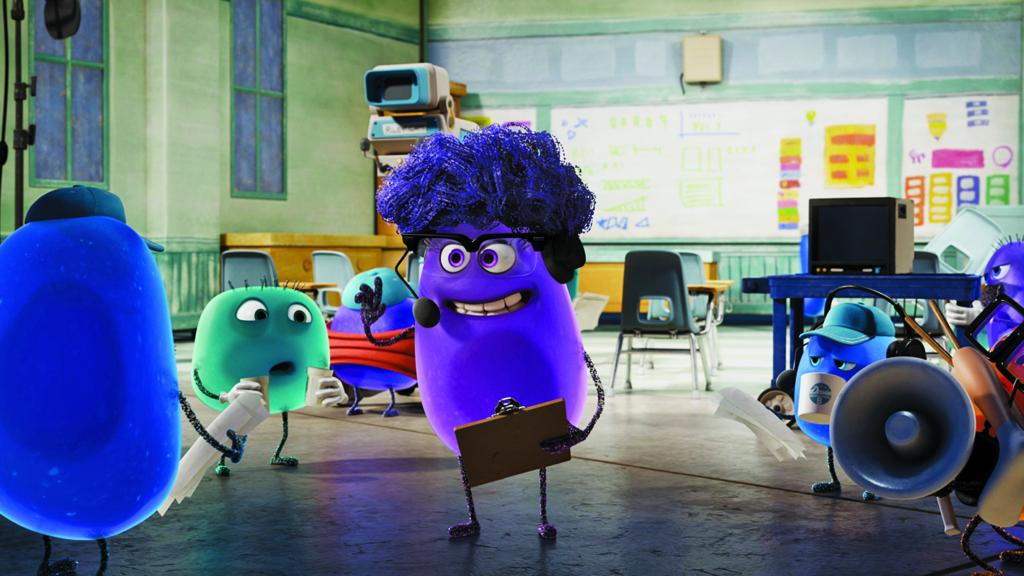
While dreams are hardly comprehensively understood by neuroscientists and psychologists, Inside Out does have an ounce of accuracy in its representation of the process. As neuroscientist Blake Porter explains, one element driving dreams is ‘hippocampal replay’, or ‘the process in which a specific sequence of neural activity is “replayed” but at a time scale much faster than what would have been experienced in the real world’.[6]Blake Porter, ‘Inside Out’s Take on the Brain: A Neuroscientist’s Perspective’, Blake Porter author website, 27 June 2015, <https://www.blakeporterneuro.com/inside-outs-take-on-the-brain-a-neuroscientists-perspective/>, accessed 22 August 2021. That aligns neatly with the presentation and purpose of dreams as conveyed in Inside Out – as an opportunity to revisit and re-evaluate recent events.
It’s that re-evaluation aspect that’s mostly missing from Inside Out’s depiction of dreams, however. The consolidation associated with hippocampal replay allows us to compare new memories with old ones, recalibrating, recontextualising and – potentially – reinterpreting our memories. Think of those nights where you go to bed angry about something and wake up comparatively calm.
This sort of pathway is implied in Inside Out, but the causality isn’t quite right. A more scientifically accurate version of events would have had Riley’s dream incorporate that traumatic classroom speech with a related memory – perhaps of her childhood in Minnesota – which would in turn have allowed the event to be processed and encoded as a core memory. Instead, the event is marked as a core memory the instant it happens rather than as the brain deals with it. From a storytelling perspective, it’s an understandable choice, but exploring the difference between science and fiction here might lead to an engaging end-of-term lesson.
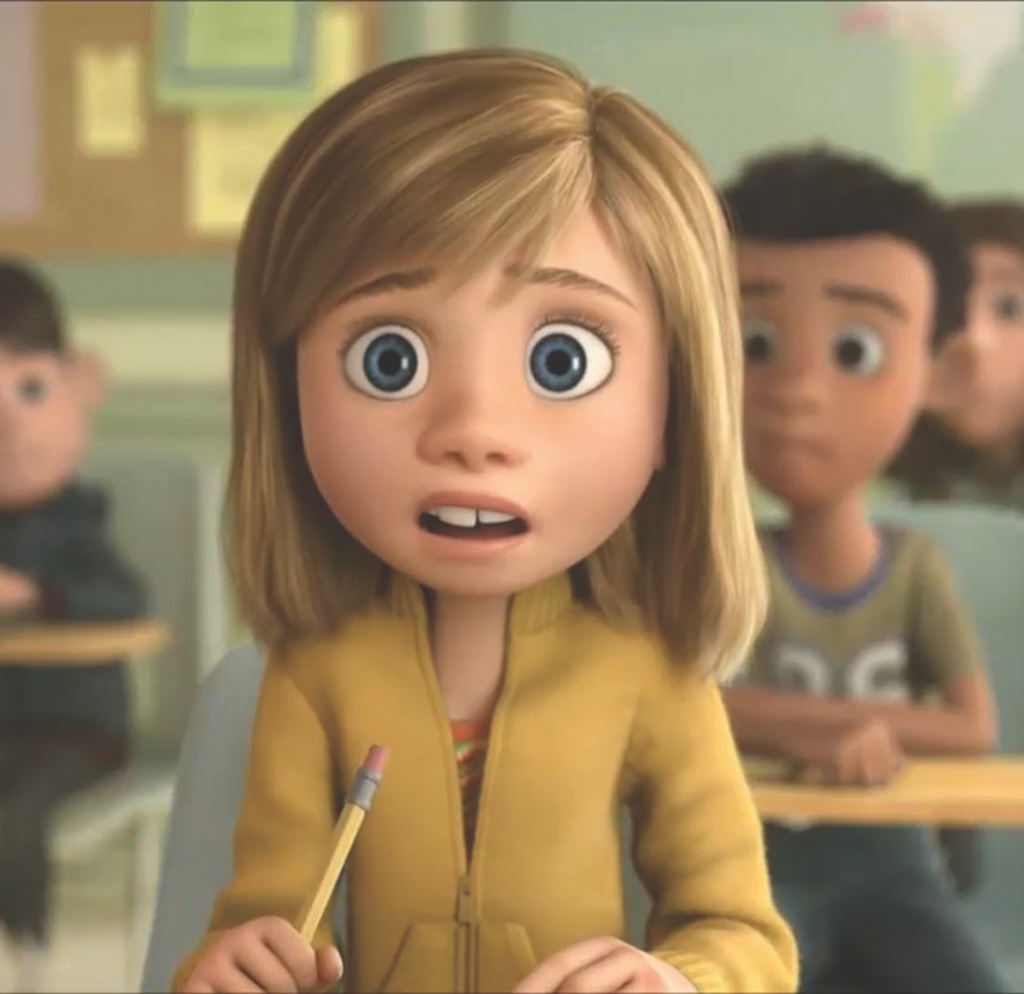
An array of emotions
Inside Out’s comparative scientific accuracy isn’t accidental; it’s thanks to psychology professors Dacher Keltner and Paul Ekman, who each contributed to the film’s screenplay as consultants. Writing for The New York Times,they clarify the limitations of scientific fact versus Hollywood fiction:
One of us suggested that the film include the full array of emotions now studied in science, but Mr. Docter rejected this idea for the simple reason that the story could handle only five or six characters.[7]Dacher Keltner & Paul Ekman, ‘The Science of Inside Out’, The New York Times, 3 July 2015, <https://www.nytimes.com/2015/07/05/opinion/sunday/the-science-of-inside-out.html>, accessed 23 August 2021.
It’s understandable that the screenplay, from Docter, Meg LeFauve and Josh Cooley (with Docter and co-director Ronnie Del Carmen given story credits), might elide scientific fact in favour of an engaging narrative. But what, precisely, are Keltner and Ekman referring to when they speak of ‘the full array of emotions now studied in science’?
Are ‘grumpy’ and ‘sad’ different emotions, or ultimately synonyms? That’s an interesting question in an English classroom when developing one’s vocabulary, but it’s also an important question to answer in fields like psychology.
Rather than answering this question immediately, I’d suggest posing this question to your classroom. What other emotions are there beyond the five depicted in Inside Out? This is a challenging question because it speaks to the imprecision of language: are, for example, ‘grumpy’ and ‘sad’ different emotions, or ultimately synonyms? That’s an interesting question in an English classroom when developing one’s vocabulary, but it’s also an important question to answer in fields like psychology, where we need to provide empirical definitions for very fuzzy ideas.
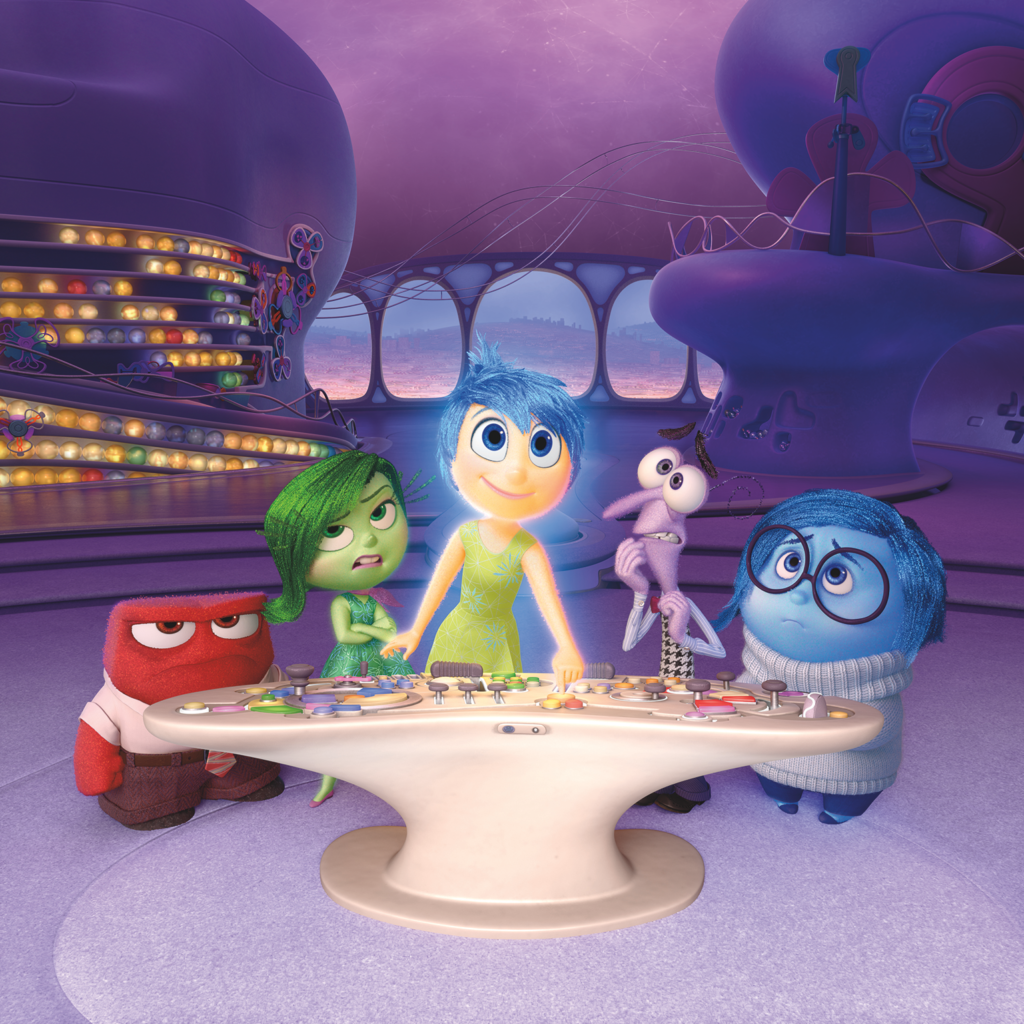
What Keltner and Ekman are likely referring to are the eight basic emotions delineated by American psychologist Robert Plutchik, who includes anticipation, trust and surprise along with the five emotions personified in Inside Out.[8]See Robert Plutchik, ‘The Nature of Emotions’, American Scientist, vol. 89, no. 4, July–August 2001, pp. 344–50. Plutchik doesn’t hypothesise that these are the only emotions – his wheel of emotions, for instance, places ‘serenity’ and ‘ecstasy’ as respectively less and more intense feelings associated with joy[9]ibid.; see also Crystal Raypole, ‘How to Use an Emotion Wheel to Get in Touch with All Your Feels’, Healthline, 30 September 2020, <https://www.healthline.com/health/emotion-wheel>, accessed 23 August 2021. – but his model nonetheless identifies them as the core psychological responses we have access to. (It’s also worth pointing out that, since this is science, there are competing emotional models out there.[10]See, for example, Albert Mehrabian, ‘Pleasure-Arousal-Dominance: A General Framework for Describing and Measuring Individual Differences in Temperament’, Current Psychology: A Journal for Diverse Perspectives on Diverse Psychological Issues, vol. 14, no. 4, 1996, pp. 261–92.)
Unpacking these emotions – through defining and demarcating them – in a Science or Psychology classroom is a valuable exercise. It reinforces the importance of classification in science, while also acknowledging the biggest challenge facing psychologists: unlike scientific fields such as physics, psychology doesn’t yield to mathematics in such a straightforward fashion.
Exploring these emotions and how they’re presented in Inside Out is the natural next step in this conversation. It’s interesting to consider the way the film initially presents Joy as Riley’s most important emotion, and how that changes over the course of the film as Sadness’ role becomes increasingly significant. See also the way that the film shows Riley’s mother’s (Diane Lane) and father’s (Kyle MacLachlan) emotions being led by their Sadness and Anger, respectively, without ever necessarily suggesting that their personalities are defined by that emotion. Considering whether or not someone can be beholden to one particular basic emotion is a great stepping stone into deeper psychological ideas.
All of this is just scratching the surface, of course – the human brain is a magnificent but intimidating thing. Inside Out might not plumb its depths with total scientific accuracy, but it is an excellent introduction to thinking about how we think … and how we feel.
Endnotes
| 1 | JV Chamary, ‘How Inside Out Explains the Science of Memory’, Forbes, 30 August 2015, <https://www.forbes.com/sites/jvchamary/2015/08/30/inside-out-science/?sh=65fad2705184>, accessed 23 August 2021. |
|---|---|
| 2 | See ‘When Storing Memories, Brain Prioritizes Those Experiences That Are Most Rewarding’, ScienceDaily, 20 November 2018, <https://www.sciencedaily.com/releases/2018/11/181120125916.htm>, accessed 23 August 2021. |
| 3 | I would’ve gone with ‘Dream Factory’, but I’m not an Oscar-nominated screenwriter so I digress. |
| 4 | Anna Keefe, ‘Teeth Falling Out in Your Dreams: What Does It Mean?’, Delta Dental website, 13 July 2018, <https://www.deltadentalwa.com/blog/entry/2015/10/teeth-falling-out-in-your-sleep-the-common-dream-decoded>, accessed 23 August 2021. |
| 5 | Naama Rozen & Nirit Soffer-Dudek, ‘Dreams of Teeth Falling Out: An Empirical Investigation of Physiological and Psychological Correlates’, Frontiers in Psychology,vol. 9, article 1812, 26 September 2018, available at <https://www.frontiersin.org/articles/10.3389/fpsyg.2018.01812/full>, accessed 23 August 2021. |
| 6 | Blake Porter, ‘Inside Out’s Take on the Brain: A Neuroscientist’s Perspective’, Blake Porter author website, 27 June 2015, <https://www.blakeporterneuro.com/inside-outs-take-on-the-brain-a-neuroscientists-perspective/>, accessed 22 August 2021. |
| 7 | Dacher Keltner & Paul Ekman, ‘The Science of Inside Out’, The New York Times, 3 July 2015, <https://www.nytimes.com/2015/07/05/opinion/sunday/the-science-of-inside-out.html>, accessed 23 August 2021. |
| 8 | See Robert Plutchik, ‘The Nature of Emotions’, American Scientist, vol. 89, no. 4, July–August 2001, pp. 344–50. |
| 9 | ibid.; see also Crystal Raypole, ‘How to Use an Emotion Wheel to Get in Touch with All Your Feels’, Healthline, 30 September 2020, <https://www.healthline.com/health/emotion-wheel>, accessed 23 August 2021. |
| 10 | See, for example, Albert Mehrabian, ‘Pleasure-Arousal-Dominance: A General Framework for Describing and Measuring Individual Differences in Temperament’, Current Psychology: A Journal for Diverse Perspectives on Diverse Psychological Issues, vol. 14, no. 4, 1996, pp. 261–92. |
